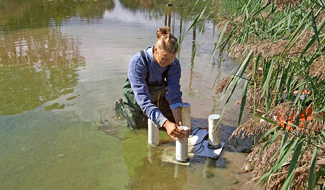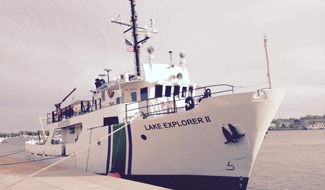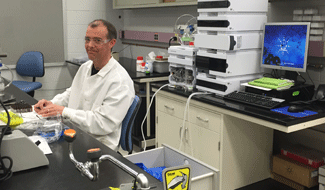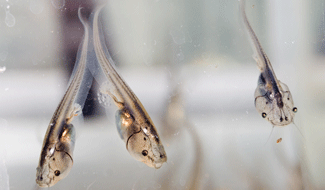About the Mid-Continent Ecology Division (MED) of EPA's National Health and Environmental Effects Research Laboratory
 Water quality research
Water quality research Division research vessel Lake Explorer II
Division research vessel Lake Explorer II Freshwater ecotoxicology research
Freshwater ecotoxicology research Amphibian toxicology research
Amphibian toxicology researchWhat We Do
The Mid-Continent Ecology Division (MED) conducts innovative research and predictive modeling to document and forecast the effects of pollutants on the integrity of watersheds and freshwater ecosystems, to characterize adverse outcome pathways of toxic exposure at multiple scales and levels of biological organization, and to link environmental condition to human health and wellbeing. Specific areas of research include:
- Pathway-based approaches to predicting toxic effects of chemicals in ecological receptors, including defining and quantifying adverse outcome pathways (AOPs) leading to toxic effects, methods to extrapolate toxicological information across chemicals, organisms, and levels of biological organization, and developing expert systems and quantitative structure-activity (QSAR) models.
- Methods and models for determining and interpreting chemical effects in ecological receptors to support and improve ecological risk assessment, including dosimetry and exposure-response modeling, bioavailability and bioaccumulation of chemicals in water and sediment, synthesis of toxicity test results, and evaluating population level effects of chemicals.
- Linking the ecological sustainability of receiving waters to watershed integrity, including developing indicators and sampling protocols for Great Lakes connecting channel condition assessments and food webs, assessing wetland function and stream nutrient dynamics, improving detection of aquatic invasive species, in addition to measuring the response of nutrient cycling to climate change in northern peatlands.
- Quantifying the outputs of freshwater ecosystems and how they contribute to human well-being and social welfare, including developing ecological, biophysical and socioeconomic indicators of ecosystem services, contributing to EPA’s EnviroAtlas, creating models for translating ecosystem structure and function into services and thence to human benefits, and developing methods to quantify tradeoffs among services resulting from management actions including environmental remediation and restoration in Great Lakes Areas of Concern.
Programs and Projects Managed by the Mid-Continent Ecology Division:
- Adverse Outcome Pathway
- Ecotoxicology Database (EcoTox)
- Markov Chain Nest Productivity Model
- Markov Chain Nest Productivity Model Estimating Tool
- Sequence Alignment to Predict Across Species Susceptibility (SeqAPASS)
Organization
Dale Hoff, Director
